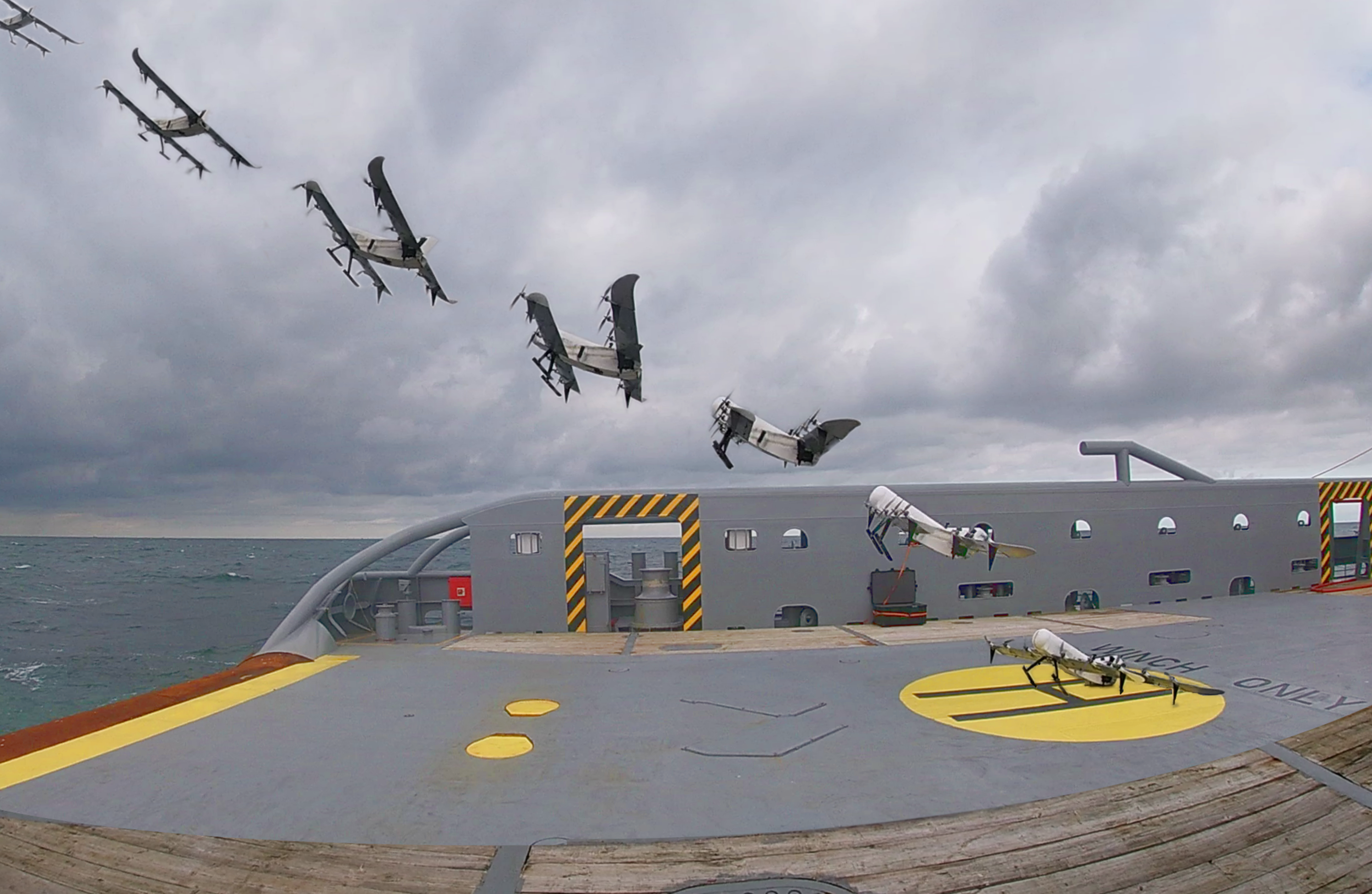TU Delft maritime hydrogen drone flies longer and greener
A drone that can fly sustainably for long distances over land and water, and can land almost anywhere, will be able to serve a wide range of applications. There are already drones that fly using ‘green’ hydrogen, but they either fly very slowly or cannot land vertically. That’s why researchers at TU Delft together with the Royal Netherlands Navy and the Dutch Coastguard service developed a hydrogen-powered drone that is capable of vertical take-off and landing whilst also being able to fly horizontally efficiently for several hours, much like regular aircraft. The drone uses a combination of hydrogen and batteries as its power source. The first successful tests were held in one of the most challenging scenarios: from a ship sailing on the open seas. This also brings maritime applications within reach and represents a new step in making aviation more sustainable.
A drone that flies over densely populated areas or the open sea has to be able to take off and land vertically, for example on an apartment complex or the afterdeck of a ship. This drains a lot of power from the battery and is detrimental to the flight duration. Fossil fuels are often used to increase aircraft range and endurance, though this is not a particularly sustainable solution. Moreover, to fly efficiently over long distances, a drone needs wings, however, fixed wing drones require additional facilities to land them, such as a runway or a net . So all in all up to now no drones have been developed that can sustainably fly long distances and still take off and land almost anywhere.
Bart Remes, Project Manager of the Micro Aerial Vehicle Lab (MAVLab) at TU Delft: “That is why we developed a drone that can take off and land vertically using hydrogen plus a battery set, and that during the horizontal hydrogen-powered flight can recharge the battery via a fuel cell, ready for the vertical landing. The fixed-wing design and the use of hydrogen means the drone can fly horizontally for hours at a time.”
The fully electric drone weighs 13kg and has a wingspan of three metres. It is also very safe: it is powered by 12 motors so even if several motors fail, it can still land safely on the afterdeck of a ship, for example.
Sustainable
The drone is equipped with a 300 bar, 6.8 litre carbon composite hydrogen cylinder. The cylinder feeds hydrogen at low pressure to the 800w fuel cell that converts it to electricity. The only emissions are oxygen and water vapour. In addition to the fuel cell that supplies electricity to the motors, there is also a set of batteries that together with the fuel cell provide extra power to the motors during the vertical take-off and landing.
The knowledge acquired while designing the drone can be used to make aviation greener. Henri Werij, Dean of the Faculty of Aerospace Engineering at TU Delft: “One of the most important aspects of this research project is the hydrogen-powered flight. Worldwide, hydrogen is seen as one of the most important contenders for achieving a green and sustainable aviation fuel.”

